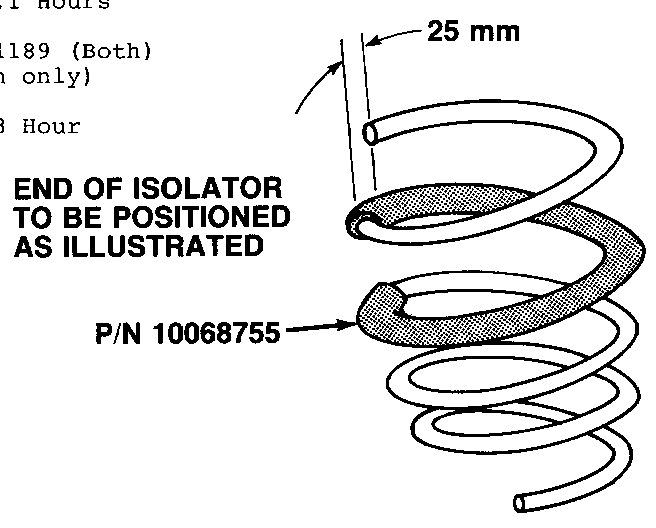REAR SPRING CLICKING NOISE REPAIR PROCEDURE OUTLINED

VEHICLES AFFECTED: 1984-87 'P' CAR
Some 1984-87 Fieros may exhibit an audibly clicking/clunking noise originating from the rear of the vehicle.
This noise maybe the result of the coils of the rear springs contacting one another during normal jounce/rebound motions of the rear suspension.
Vehicles exhibiting this condition maybe corrected by following applicable procedures indicated below by model year.
1984-86
On all 1984-86 vehicles, replace rear springs in conjunction with installation of new formed spring isolators, P/N 10068755. Applicable Shop Manual procedures should be followed for removal and installation of springs and isolators must be posit,ioned as shown in attached Illustration.
1987
On 1987 vehicles assembled prior to October 27, 1986 and equipped with rear springs coded NXD, follow procedure above for 1984-86 vehicles. All other 1987 vehicles assembled prior to October 27, 1986, will only require installation of new spring isolators, P/N 10068755. Installation of isolators on these vehicles can be achieved by supporting vehicle so that rear suspension is in a full rebound position, therefore not requiring rear strut removal and disasembly.
When spring replacement is required, proper spring selection can be determined by utilizing either the prefix code on spring tags or prefix code on the vehicles "Service Parts Identification Label" and refering to chart below:
1984-87 'P' Car Rear Spring Chart
Information in the 1st. column can be found on the vehicle "Service Parts Identification Label" and will be proceded on the label by a numbering code indicating location on vehicle.
8 - L. H. Rear Spring 9 - R. H. Rear Spring
Information in the 2nd. column indicates proper service part number.
Information in the 3rA. colummn is alpha code found on the spring tag.
SERVICE PARTS SERVICE SPRING TAG I. D. LABEL CODE PART NUMBER CODE YJ 10034674 NYJ YK 10034674 NYK YL 10034976 NYL YM 10034976 NYM WW 10029090 NWW WX 10029091 NWX WY 10029092 NWY XD 10030180 NXD

General Motors bulletins are intended for use by professional technicians, not a "do-it-yourselfer". They are written to inform those technicians of conditions that may occur on some vehicles, or to provide information that could assist in the proper service of a vehicle. Properly trained technicians have the equipment, tools, safety instructions and know-how to do a job properly and safely. If a condition is described, do not assume that the bulletin applies to your vehicle, or that your vehicle will have that condition. See a General Motors dealer servicing your brand of General Motors vehicle for information on whether your vehicle may benefit from the information.
